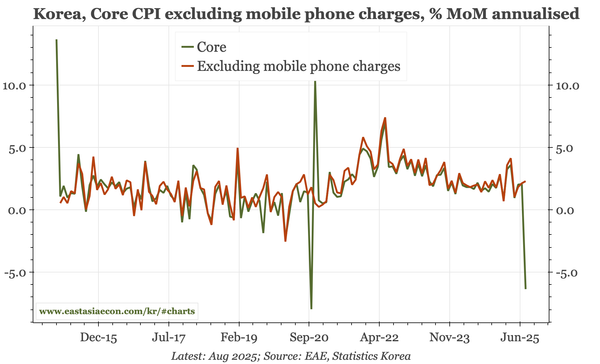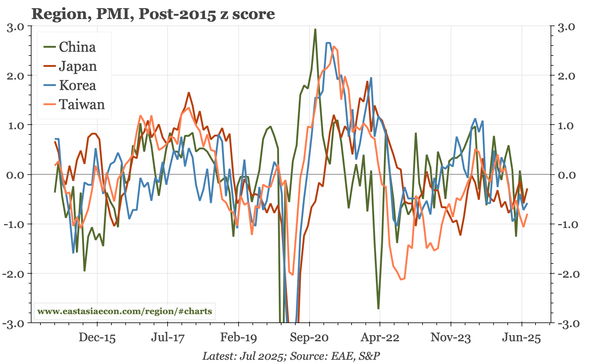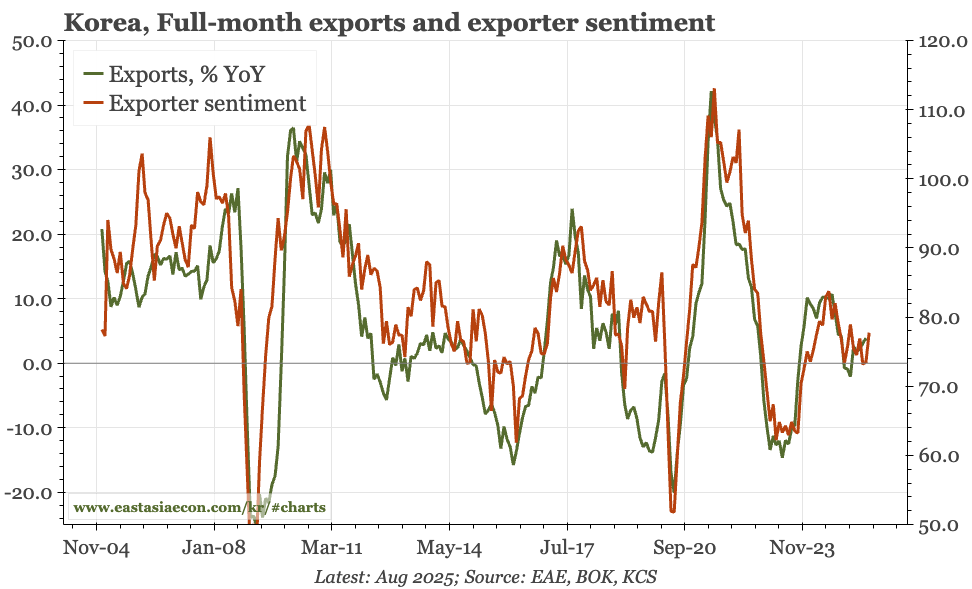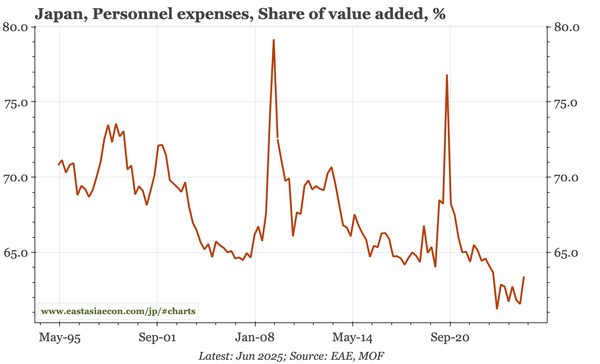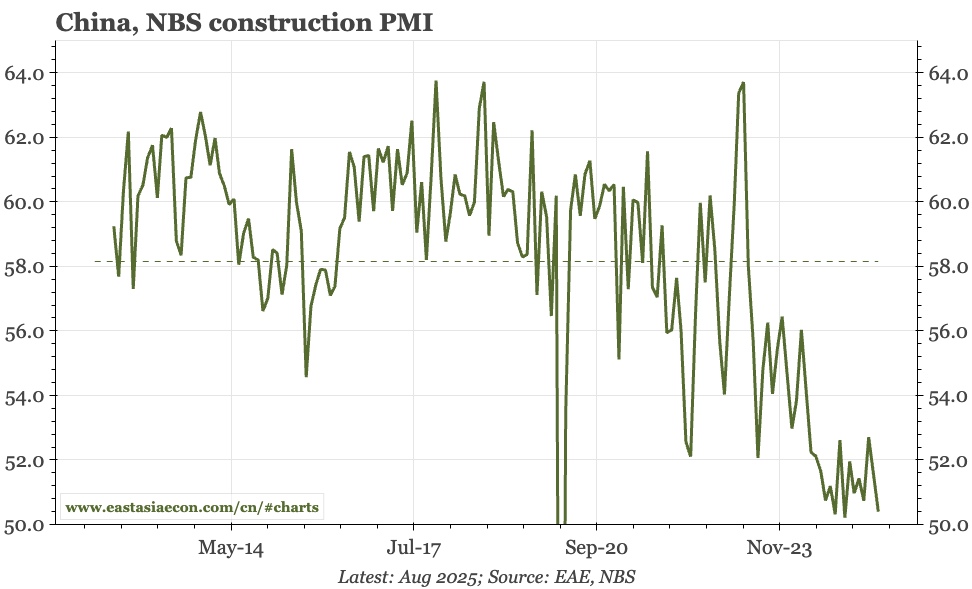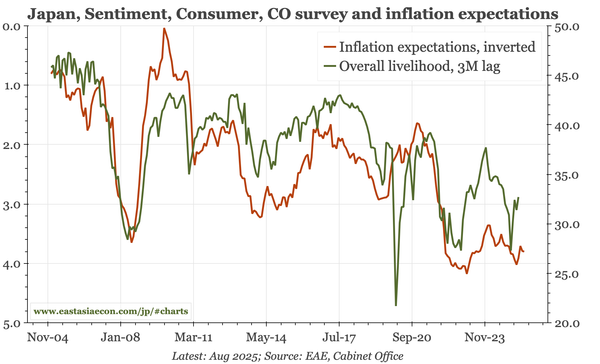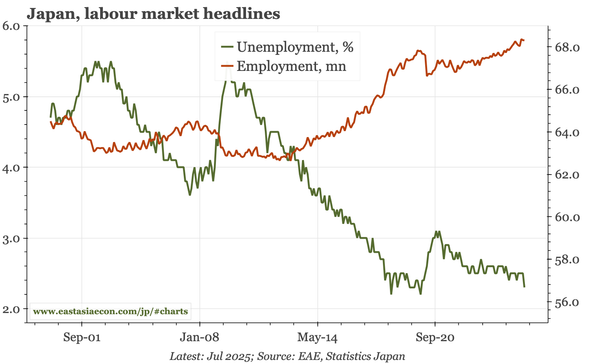Korea – wage growth still slowing, floor should be close
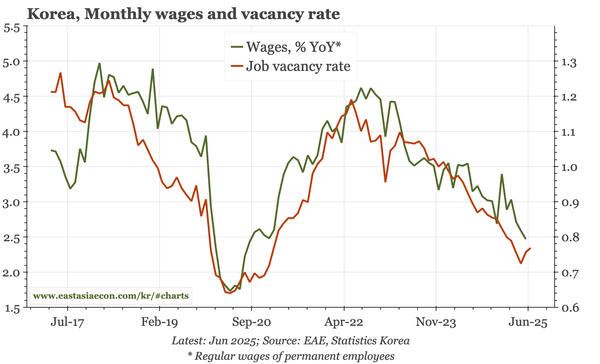
The breakdown of income in the detailed Q2 GDP data shows the labour share falling, but remaining well above the pre-covid level. That implies wage growth has slowed to a bit over 2%. Bottom-up wage data for June look similar. A floor is probably close, but there's no sign of a re-acceleration yet.



